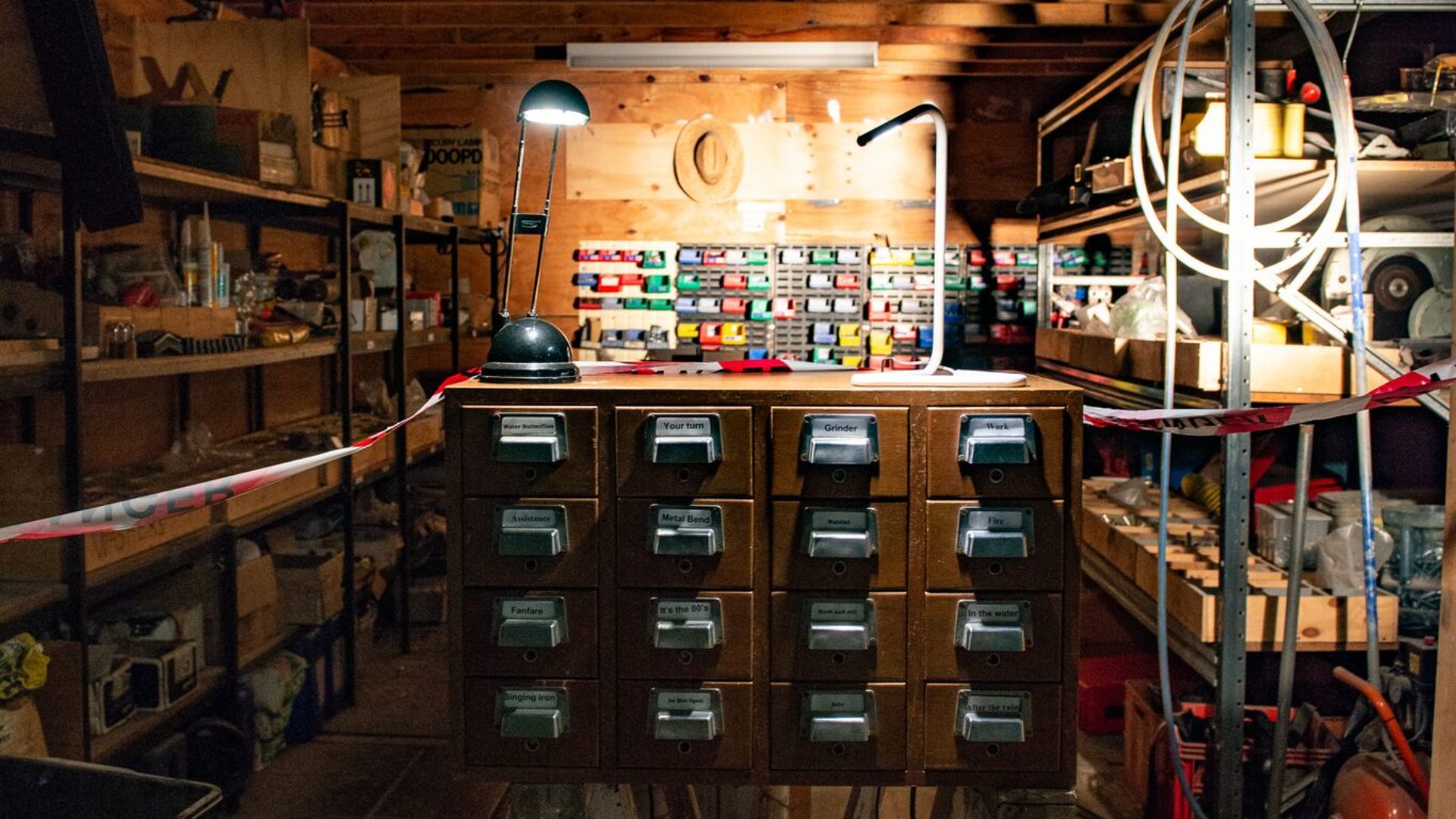Hex on Data is a collaborative work by John R. Ferguson and Nicole L. Carroll. A growing range of tessellating boxes evolve along a surface; some produce electronic sound directly via the infamous 40106 CMOS chip, others function as custom controllers with knobs, buttons, and accelerometers connected to Ableton, Max and Touch Designer software to create a unique audiovisual system that is both “hands-on” and modular.
The boxes are performed utilizing the physical controls and sensors as well as through placement of the boxes in proximity to others. The act of considered placement adds a performative dimension to the system, as the gestures manipulate ambient and direct light to affect sonic textures and rhythmic patterns. The boxes may function as controllers and receivers simultaneously, creating a data, visual, and auditory feedback system. Each sound-producing box has a unique circuitry, sensor configuration, and control interface to maximize the potential from the 40106 CMOS chip, the “hex Schmitt trigger.” While several of the boxes produce the raw timbres associated with the harsh square wave output of the 40106, the system collectively creates a sonic world that encompasses noise, pop, and acousmatic genres to produce a range of tonalities and textures. The sonic output is ultimately controlled by custom real-time processing in Max and drum programming in Ableton. The accompanying visuals created through Touch Designer augment the performance system. The projected visuals integrate live camera feed and sound-reactive visual motives based on the tessellating patterns of the box structures. The projected visuals then produce rhythmic ambient light to control the light-controlled boxes, thus completing the audiovisual feedback system.
Hex on Data is a study of DIY handmade electronic music and visual generation systems as implemented in non-linear audiovisual performance. It explores feedback systems utilizing tactile systems where performance gestures and light control and reception enable cyclical sonic and visual motives. The modular design allows an infinite array of potential performance outcomes. Hex on Data considers how each element–hardware and software, tangible and virtual–of the system can both enact and respond to generative processes through gestural control and light manipulation. The authors explore the role and affordances of each element and how it contributes towards the temporal sonic and visual space. This question arises during both the design and interactive performance. During performance, the authors explore shifting timbres, rhythms, and recurring sonic and visual motives by manipulating the boxes’ configuration and their relationship to one another. This fluid relationship between the modules allows for often unexpected and novel trajectories. The interplay of these emerging textures and motives with the performers’ responsiveness and interaction highlights the affordances of handmade bespoke systems towards musical structures in non-linear systems.

Hex on Data is an ever-evolving modular system and instrument. As each box is designed, tested, and integrated into the system, new control functions and performance affordances inspire the next design. The fluid and iterative nature of the design process is mirrored in the performance practice; thus, it becomes evident that the “work” is not simply the performance or the physical instrument or code but the complete system and the audiovisual outputs as they evolve.



